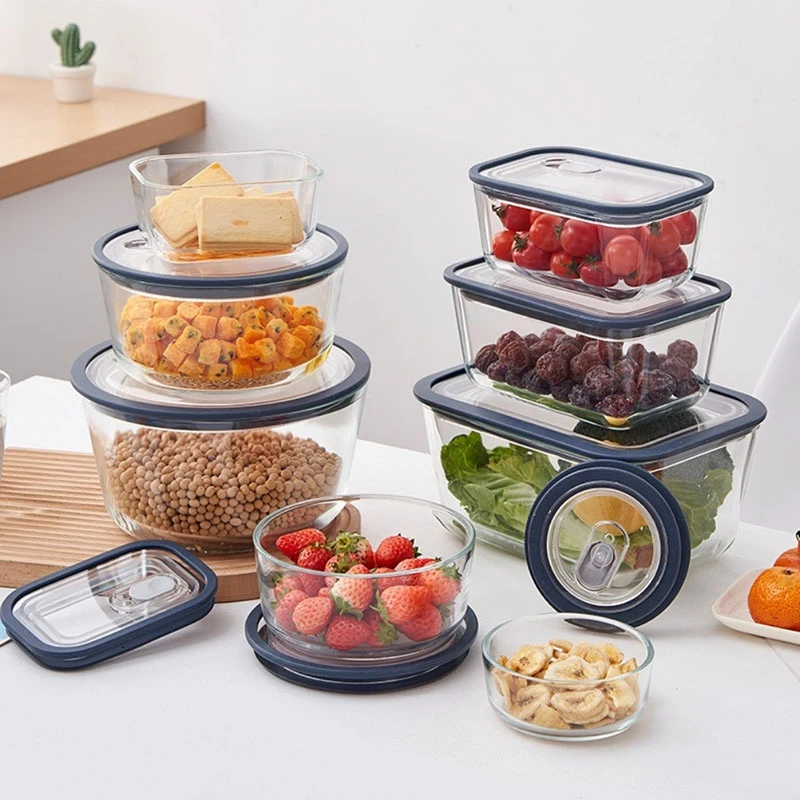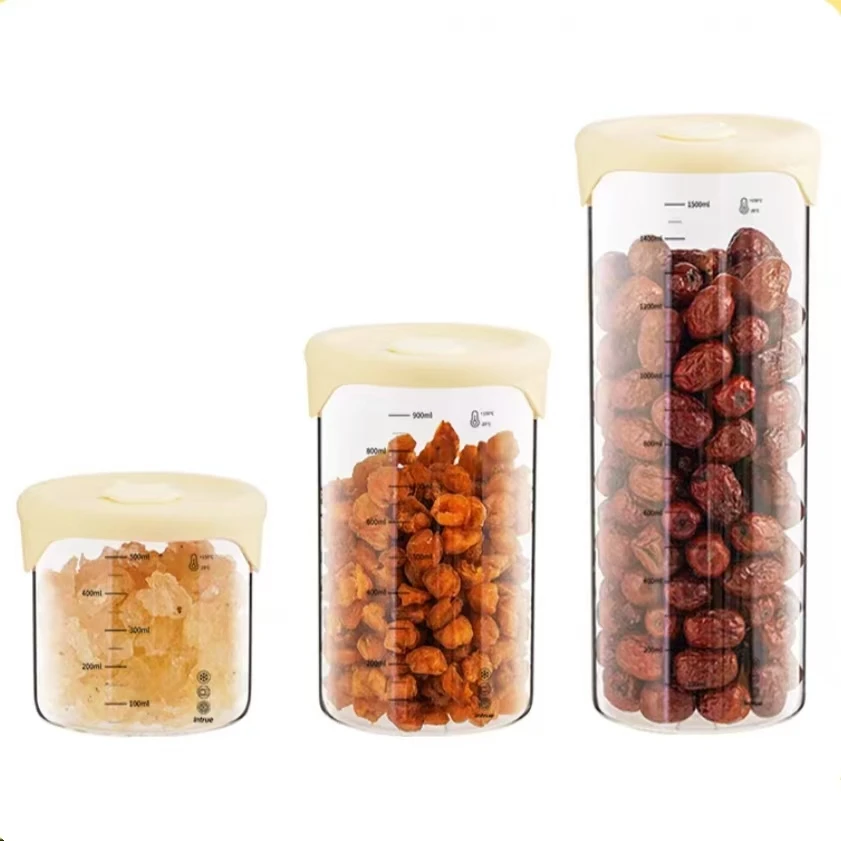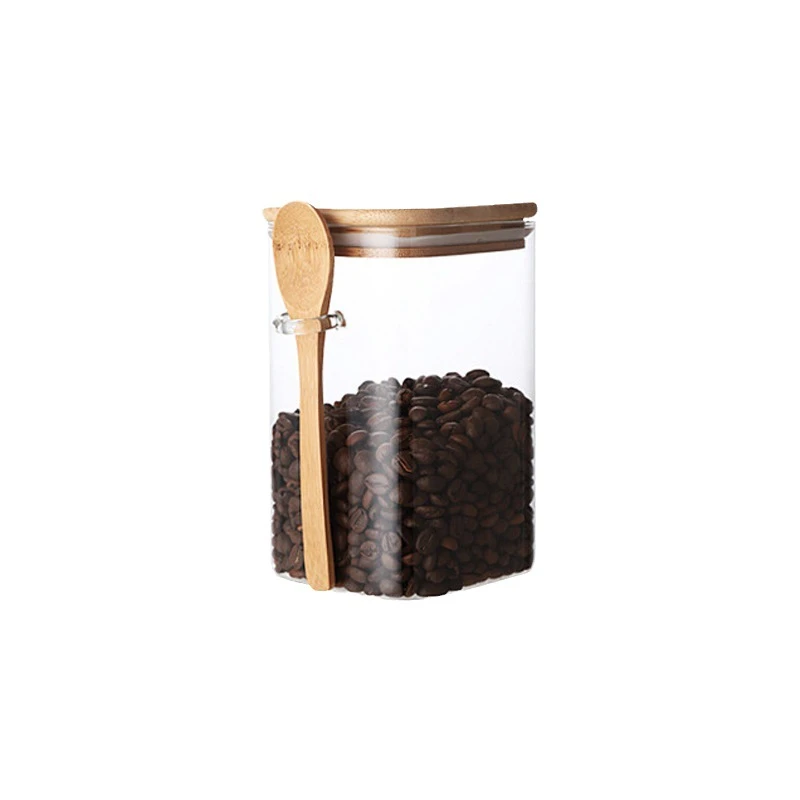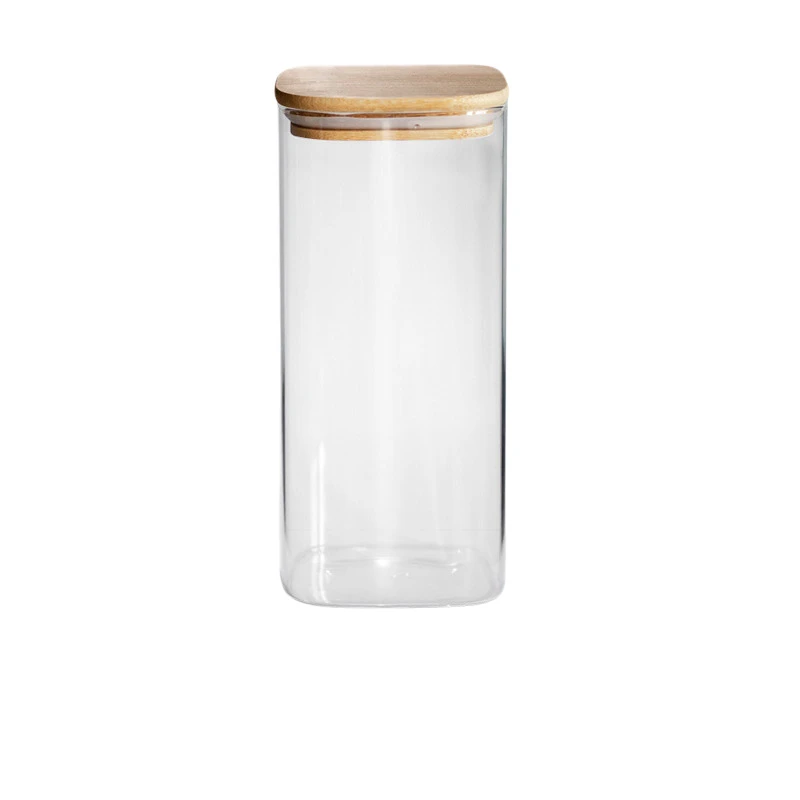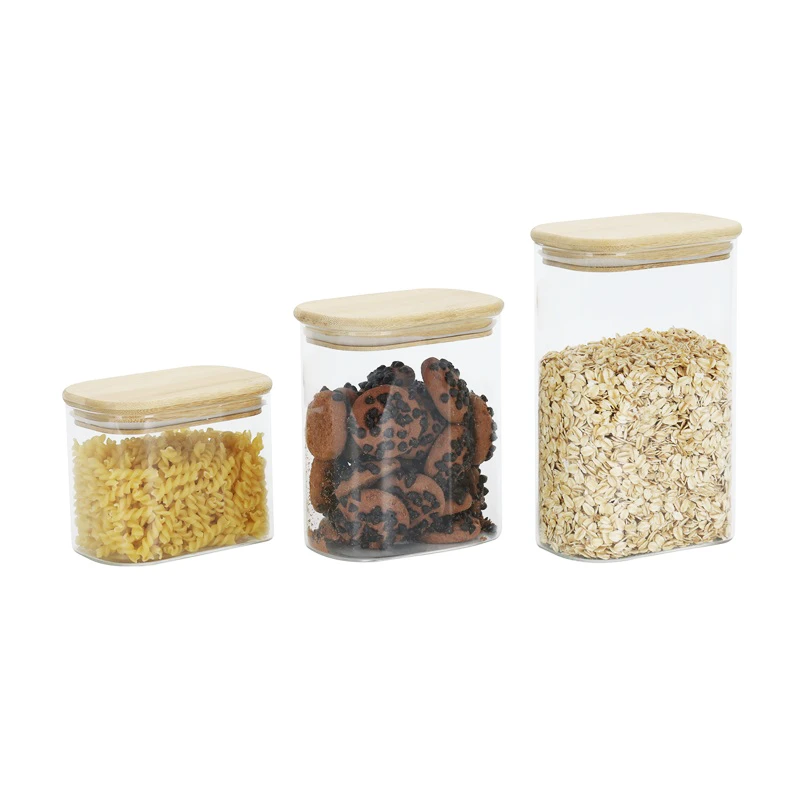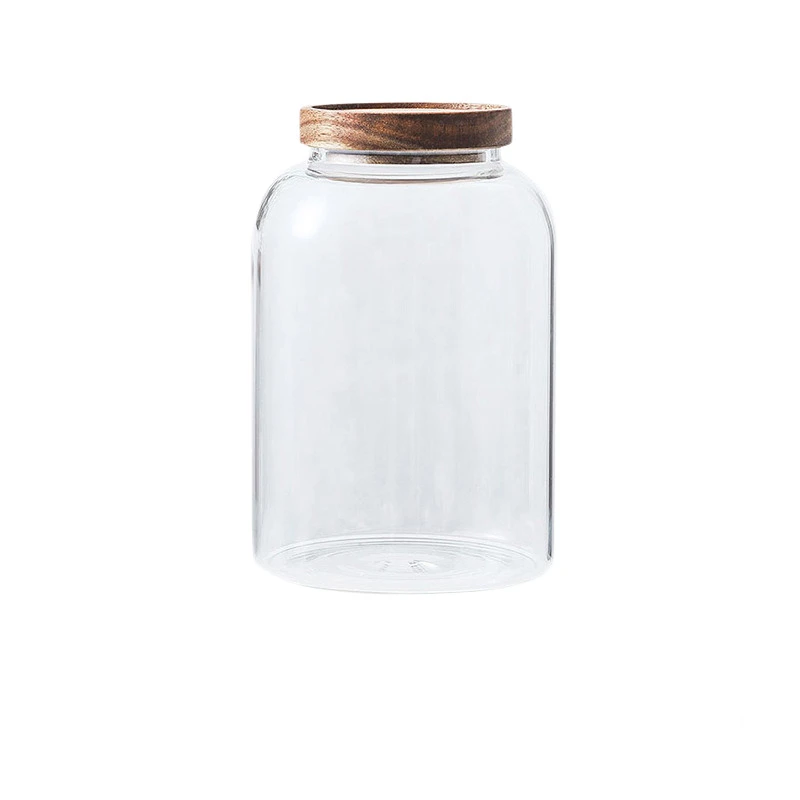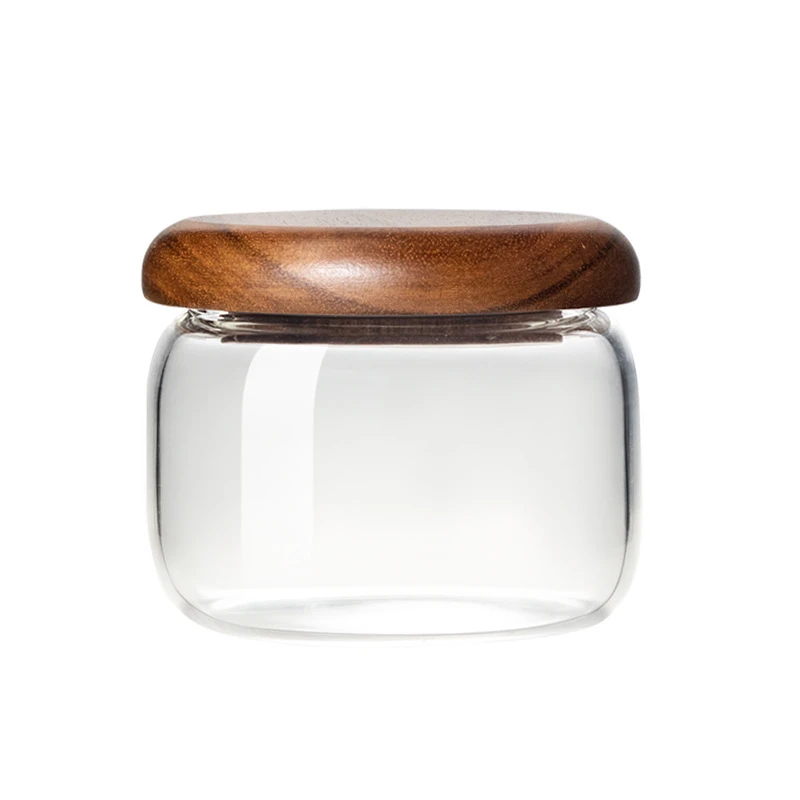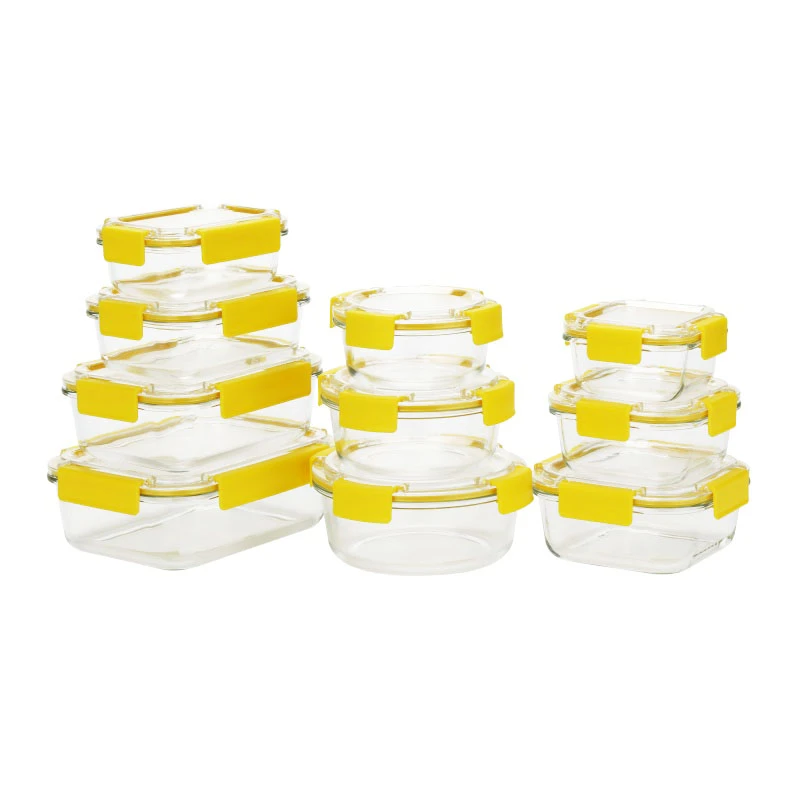 TEL: +86 311 67799298
TEL: +86 311 67799298 Email: tina@yintoglassware.com
Email: tina@yintoglassware.com
Extend Freshness: Best Vacuum Containers for Food Storage
The Essential Role of Advanced Vacuum Food Storage in B2B Operations
In the demanding landscape of commercial food service, manufacturing, and R&D, maintaining product freshness and integrity is paramount. High-quality vacuum container111 for food solutions are no longer a luxury but a strategic necessity. These advanced container111s extend shelf life, preserve nutritional value, and streamline operations, offering significant economic and qualitative advantages. Our focus here is on sophisticated glass container111s, specifically the Glass Food Storage Container with Lid, designed to meet the rigorous standards of B2B applications, ensuring superior performance and reliability.
The adoption of specialized vacuum storage container111s is driven by a collective industry push towards greater efficiency, reduced waste, and enhanced food safety. This exploration delves into the technical intricacies, application benefits, and strategic considerations for businesses investing in cutting-edge vacuum preservation technology.
Industry Trends and Market Dynamics for Vacuum Food Storage
The market for food preservation solutions, particularly those utilizing vacuum technology, is experiencing robust growth. Driven by increasing consumer demand for fresh, healthy, and minimally processed foods, as well as stringent food safety regulations, B2B entities are seeking more effective storage methods. Reports indicate the global food vacuum packaging market is projected to reach over USD 40 billion by 2027, growing at a CAGR of around 5-6%. This expansion is fueled by technological advancements in sealing mechanisms, material science, and automation.
Key trends include:
- Sustainability Focus: A growing emphasis on reusable and eco-friendly materials, making glass vacuum container111s a preferred choice over single-use plastics.
- Smart Storage Solutions: Integration with IoT for inventory management and monitoring internal conditions.
- Enhanced Durability & Performance: Development of materials that withstand extreme temperatures and resist chemical degradation, crucial for professional kitchens and laboratories.
- Versatility: Demand for vacuum seal container111s that can seamlessly transition from freezer to oven to serving.
The shift towards healthier eating and pre-portioned meal solutions in various B2B sectors, from catering to institutional food services, further underscores the importance of reliable vacuum storage container111s.
Manufacturing Process of a High-Performance Vacuum Food Container
The production of a durable and effective vacuum container111 for food involves a multi-stage manufacturing process, emphasizing precision engineering and material quality. Our Glass Food Storage Container with Lid is engineered for longevity and optimal performance, adhering to stringent quality controls.
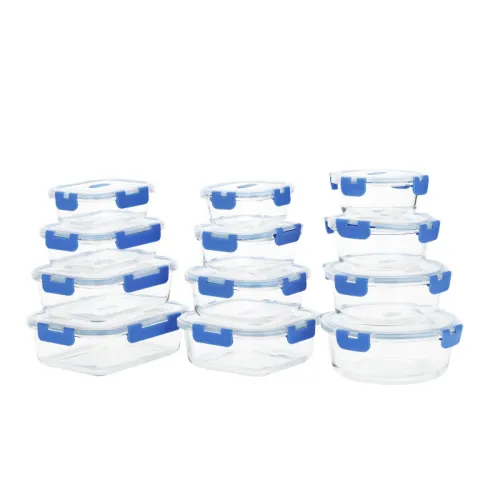
Figure 1: High-quality glass container111 components ready for assembly.
Process Flow:
-
Material Selection & Preparation:
Primary material for the container111 body is high-borosilicate glass (SiO₂ content typically >80%). This choice is critical for its superior thermal shock resistance, chemical inertness, and non-porous surface. Raw materials are rigorously screened for purity to prevent inclusions or defects. Silicone rubber, often platinum-cured, is selected for seals due to its flexibility, durability, and non-toxic properties, meeting FDA and LFGB standards.
-
Glass Forming (Casting/Molding):
Molten borosilicate glass, heated to approximately 1600-1700°C, is precisely cast or blown into molds. This process ensures uniform wall thickness and specific volumetric capacities. Advanced automated molding techniques minimize imperfections and ensure consistent dimensions, crucial for tight vacuum seals. Post-forming, container111s undergo annealing in controlled furnaces to relieve internal stresses, enhancing their mechanical strength and thermal stability.
-
Lid and Sealing Component Manufacturing (Injection Molding/Forging):
Lids are typically produced from robust, food-grade plastics (e.g., PP, Tritan) via injection molding for precision fit. The silicone gaskets, essential for forming the vacuum, are compression molded or liquid injection molded (LIM) to exact specifications, ensuring an airtight seal that can withstand repeated vacuum cycles. Integral components like vacuum valves and pump interfaces are also manufactured with high-precision CNC machining to ensure reliable functionality.
-
Surface Treatment & Finishing:
Glass surfaces may undergo polishing or chemical strengthening treatments to enhance scratch resistance and durability. Lids and other plastic components are deburred and polished. Quality checks for clarity, absence of defects, and dimensional accuracy are performed at this stage.
-
Assembly:
Containers, lids, and silicone seals are assembled. The critical step involves carefully integrating the silicone gasket into the lid, ensuring perfect alignment for optimal vacuum creation and retention. Vacuum valves are secured into position.
-
Testing & Quality Assurance:
Each vacuum container111 undergoes rigorous testing. This includes:
- Vacuum Retention Test: Containers are subjected to a specific vacuum pressure (e.g., -0.6 bar) and monitored over extended periods (e.g., 24-72 hours) to ensure minimal pressure loss.
- Thermal Shock Resistance (ISO 718:1998): Glass container111s are tested for resistance to rapid temperature changes, crucial for freezer-to-oven applications.
- Leakage Testing (ASTM D3078): Confirms the integrity of seals under pressure differentials.
- Material Safety (FDA, LFGB, REACH): Verification that all food-contact materials meet international safety standards, free from BPA, phthalates, and other harmful substances.
- Cycle Testing: Lids and seals are tested for durability over thousands of opening/closing and vacuuming cycles.
-
Packaging & Distribution:
Finished products are carefully packaged to prevent damage during transit, ready for distribution to target industries.
The typical service life for a high-quality glass vacuum container111 for food, under proper B2B usage and maintenance, can extend significantly, often exceeding 5-10 years for the glass component, with seals and lids being replaceable components to maintain optimal performance.
Technical Specifications and Performance Advantages
Our Glass Food Storage Container with Lid, designed as a premium vacuum container111, exemplifies advanced engineering for food preservation. Its robust construction and intelligent design offer significant technical advantages in commercial settings.
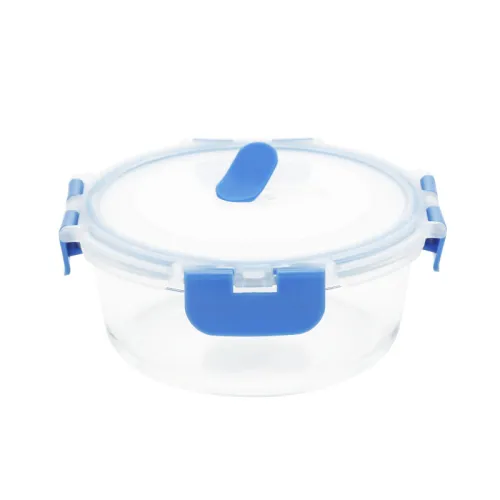
Figure 2: Precision-engineered lid with integrated vacuum pump valve.
Key Product Specifications:
| Feature | Specification | Benefit |
|---|---|---|
| Container Material | High-Borosilicate Glass (3.3 Expansion) | Exceptional thermal shock resistance (-20°C to 400°C), non-porous, odor/stain resistant, chemically inert. |
| Lid Material | Food-Grade PP / Tritan (BPA-free) | Durable, shatter-resistant, safe for food contact, maintains structural integrity under vacuum. |
| Seal Material | Platinum-Cured Silicone Gasket | Superior elasticity and durability, airtight seal, resistant to aging and extreme temperatures, FDA/LFGB compliant. |
| Vacuum Pressure Achievable | Typically -0.4 to -0.6 Bar (approx. 60-40 kPa absolute pressure) | Significantly inhibits aerobic bacterial growth and oxidation, extending food freshness by up to 5x. |
| Temperature Range (Glass) | -20°C to 400°C (-4°F to 752°F) | Versatile for freezing, refrigeration, microwave, oven, and dishwasher use. |
| Volume Capacities | Available from 300ml to 3000ml (customizable) | Accommodates diverse storage needs, from small portions to bulk ingredients. |
| Certifications | ISO 9001 (Manufacturing), FDA, LFGB, RoHS compliant materials | Ensures adherence to international quality management and food safety standards. |
Technical Advantages:
- Superior Preservation: The low oxygen environment created by the vacuum significantly slows down oxidation and the growth of spoilage microorganisms, preserving flavor, texture, and nutritional content. This translates to reduced food waste and improved profitability.
- Thermal Versatility: Borosilicate glass's exceptional thermal resistance allows for seamless transition from cold storage to heating, simplifying meal preparation and serving processes. This is a crucial advantage for commercial kitchens.
- Chemical Inertness: Unlike some plastics, glass does not leach chemicals into food, nor does it absorb odors or stains. This ensures pure food taste and extends the aesthetic life of the container111s.
- Enhanced Hygiene: The non-porous surface of glass prevents bacterial adhesion and is easy to clean, meeting the strict hygiene standards of B2B food environments. It's dishwasher-safe and sterilizable.
- Durability & Longevity: Built for commercial use, these vacuum seal glass container111s with pump systems are designed to withstand daily rigorous handling, offering a long service life and reducing replacement costs.
- Energy Efficiency: By extending food freshness, these container111s indirectly contribute to energy savings by reducing the frequency of food procurement and minimizing spoilage in refrigerated storage.
- Corrosion Resistance: Borosilicate glass is highly resistant to acids, alkalis, and other corrosive substances found in various food products, ensuring container111 integrity over time.
Application Scenarios and Target Industries
The versatility and high performance of a robust vacuum container111 for food make it indispensable across a spectrum of B2B industries focused on food handling and preservation.

Figure 3: Vacuum container111s optimized for commercial kitchen efficiency.
Key Target Industries and Application Examples:
-
Commercial Kitchens & Restaurants:
Ideal for ingredient prep and storage (e.g., cut vegetables, marinated meats, pre-cooked sauces) to reduce spoilage, maintain freshness, and streamline daily operations. Essential for sous-vide preparation and controlled atmosphere storage of delicate herbs and greens. Reduces waste by extending the usable life of expensive ingredients.
-
Catering Services:
Ensures food quality and safety during transport and holding periods for events. Keeps prepared dishes fresh and flavorful until serving, crucial for maintaining reputation and client satisfaction.
-
Food Manufacturing & Processing:
Used for small-batch ingredient storage, sample preservation for quality control, or protecting delicate components from oxidation before integration into larger production lines. Ensures consistency and reduces material loss.
-
Research & Development Laboratories:
Critical for preserving sensitive food samples, chemical reagents, or biological cultures under controlled atmospheric conditions. The inertness of borosilicate glass prevents contamination and reaction.
-
Hotels & Institutional Food Services:
Manages large volumes of food efficiently, from bulk ingredient storage to prepared meal components for buffets or patient/resident meals. Improves inventory management and reduces operational costs. Specific advantages include energy saving from reduced spoilage and superior corrosion resistance for various food types.
-
Meal Prep & Delivery Services:
Extends the freshness of pre-portioned meals, enhancing customer satisfaction and allowing for wider delivery radii. Supports business models focused on healthy, ready-to-eat options.
Vendor Comparison: Vacuum Sealing Solutions
When selecting a vacuum container111 for food, B2B decision-makers face a variety of options. A critical comparison involves material type, sealing mechanism, and overall durability. While plastic vacuum seal container111s are common, glass options, especially those with robust pumps, offer distinct advantages.
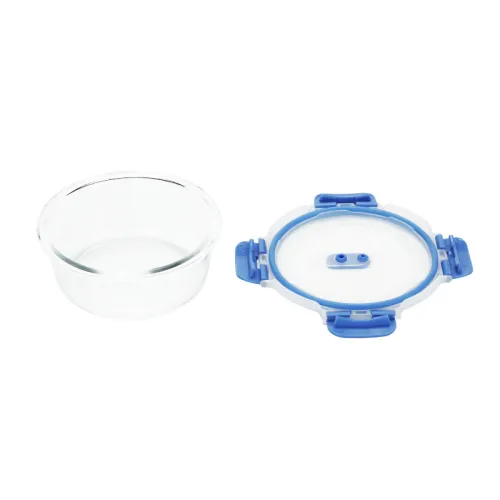
Figure 4: A range of vacuum storage container111s illustrating varied capacities.
Comparison Table: Glass vs. Plastic Vacuum Containers
| Feature | Glass Vacuum Container (e.g., Borosilicate) | Plastic Vacuum Container (e.g., PP, Tritan) |
|---|---|---|
| Material Composition | High-borosilicate glass, platinum-cured silicone seals | Food-grade plastics (PP, Tritan, SAN), synthetic rubber seals |
| Thermal Resistance | Excellent (-20°C to 400°C), oven/microwave safe | Good (typically -20°C to 100°C), usually microwave safe, not oven safe |
| Chemical Inertness | Superior; no leaching, no odor/stain absorption | Good; can absorb odors/stains over time, potential for microplastic leaching with wear |
| Durability (Impact) | High resistance to scratches; susceptible to shattering on hard impact | Good resistance to shattering; susceptible to scratches and clouding |
| Vacuum Retention | Excellent, stable over long periods due to rigid structure | Good; can be impacted by material degradation or flexing over time |
| Hygiene & Cleaning | Easy to clean, non-porous, dishwasher safe, no bacterial adhesion | Generally easy to clean, but can retain odors/stains; scratches can harbor bacteria |
| Environmental Impact | Highly recyclable, long lifespan, sustainable choice | Recyclability varies by plastic type, shorter lifespan, contributes to plastic waste |
| Cost (Initial) | Higher initial investment | Lower initial investment |
| Cost (Lifetime) | Lower, due to longevity and reusability | Higher, due to more frequent replacement needs |
While plastic options offer a lower initial cost, the long-term benefits of glass, particularly for applications requiring frequent use, high hygiene standards, and thermal versatility, consistently outweigh the upfront expenditure. Companies prioritizing food safety, sustainability, and operational longevity will find vacuum seal glass container111s with pump systems to be the superior choice.
Customized Solutions for Specialized Needs
Recognizing that B2B operations often have unique requirements, customization options for vacuum container111 for food systems are crucial. We offer tailored solutions to align with specific operational workflows, branding, and technical demands.

Figure 5: Custom-designed lids and branding options for vacuum container111s.
Customization Capabilities Include:
- Volume & Dimensions: Tailored capacities and container111 geometries to fit specific storage units, shelving, or portion control needs, ranging from mini-container111s for spices to large tubs for bulk ingredients.
- Lid Design & Material: Custom lid colors, branding (logo embossing/printing), and specialized materials for enhanced chemical resistance or impact protection. Integration of specific valve types or monitoring ports.
- Seal Specifications: Development of seals with particular hardness (durometer), chemical resistance, or temperature range to suit unique applications (e.g., highly acidic foods, extreme low-temperature storage).
- Accessories & Integration: Custom trays, dividers, or racks designed to fit within container111s for organized storage. Compatibility with existing vacuum pumps or automated sealing systems.
- Packaging & Kitting: Bulk packaging, custom retail packaging for B2B resale, or creation of specific kits combining various container111 sizes and accessories.
Our engineering team collaborates closely with clients to develop solutions that not only meet but exceed their functional and aesthetic requirements, ensuring optimal performance and seamless integration into their operations.
Application Case Studies & Customer Experience
Real-world applications demonstrate the tangible benefits of investing in high-quality vacuum container111 for food systems. Our commitment to providing reliable solutions has fostered strong partnerships across various sectors.
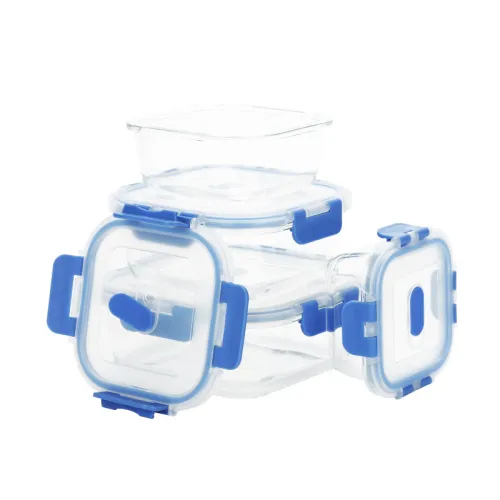
Figure 6: A professional kitchen utilizing vacuum container111s for organized food prep.
Case Study 1: High-Volume Catering Service
A leading corporate catering firm, experiencing significant food waste from spoilage during storage and transport, implemented our vacuum seal glass container111s with pump systems. Prior to adoption, they estimated a 15% loss of perishable ingredients weekly.
- Challenge: Maintaining freshness of pre-chopped vegetables, marinated meats, and sauces over a 24-48 hour window for large-scale events.
- Solution: Standardized on various sizes of our borosilicate glass vacuum container111s.
- Results: Reduced food waste by over 60%, resulting in an estimated annual saving of USD 75,000. Customer feedback highlighted noticeably fresher and more vibrant ingredients in prepared dishes. The thermal resistance of the glass also allowed for direct reheating in ovens, improving efficiency.
Case Study 2: Boutique Food Manufacturer
A manufacturer specializing in artisanal fermented foods and gourmet sauces needed a storage solution that prevented oxidation during critical fermentation stages and preserved product quality post-production.
- Challenge: Preventing undesirable oxidation during fermentation and extending shelf life of finished products without chemical preservatives.
- Solution: Utilized our custom-sized vacuum storage container111s for controlled anaerobic fermentation environments and subsequent storage.
- Results: Achieved greater consistency in fermentation processes and extended the shelf life of their gourmet sauces by an average of 45 days, enabling wider distribution and reduced returns. The non-reactive glass ensured no flavor transfer, maintaining product purity.
Customer Feedback: "After integrating these vacuum container111s into our daily operations, we've seen a dramatic decrease in spoilage. The quality of our ingredients stays impeccable for much longer, which directly translates to better dishes and a healthier bottom line. They are incredibly durable and easy to clean, a true workhorse in our busy kitchen." - Head Chef, Five-Star Hotel Group.
Authoritativeness and Trustworthiness
Our commitment to quality, compliance, and customer satisfaction underpins our position as a trusted provider of B2B food storage solutions. We uphold stringent standards in every aspect, from manufacturing to after-sales support.
Certifications and Standards:
- ISO 9001: Our manufacturing facilities adhere to ISO 9001 Quality Management System standards, ensuring consistent product quality and continuous improvement.
- FDA & LFGB Compliance: All food-contact materials, including borosilicate glass and platinum-cured silicone, are certified to meet the rigorous safety standards of the U.S. Food and Drug Administration (FDA) and the German Food, Commodities and Feed Act (LFGB), ensuring they are BPA-free and non-toxic.
- ASTM Standards: Glass components are tested against relevant ASTM (American Society for Testing and Materials) standards for durability, thermal shock resistance, and chemical attack resistance.
- CE Marking: Our products comply with European health, safety, and environmental protection standards.
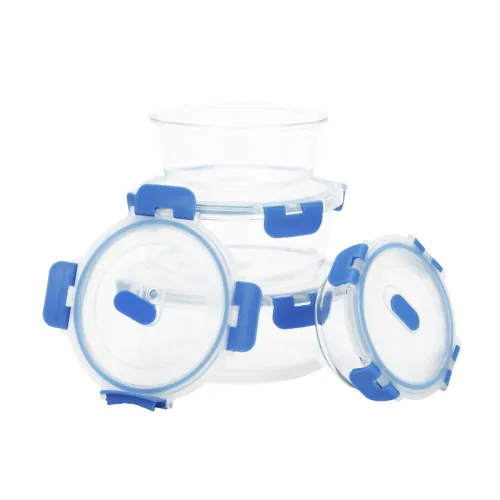
Figure 7: Display of product certifications and quality seals.
Frequently Asked Questions (FAQ):
- Q: How long does the vacuum seal typically last?
- A: With proper sealing, our vacuum container111 can maintain a strong vacuum for several days to a week or more, depending on the food item and ambient conditions. Silicone seals are designed for long-term integrity.
- Q: Are the container111s freezer, oven, and microwave safe?
- A: Yes, the borosilicate glass container111 itself is safe for freezer (-20°C), microwave, and oven (up to 400°C) use. The lid, however, is not oven-safe and should be removed before placing the glass in a conventional oven. It is microwave-safe for reheating with the vacuum valve open.
- Q: How do I clean and maintain the vacuum container111s?
- A: Both the glass container111 and lid are dishwasher safe. For optimal longevity of the silicone seal, hand washing is recommended. Ensure the vacuum valve is clean and free of food debris to maintain optimal sealing performance.
- Q: What is the estimated lead time for bulk orders?
- A: Standard bulk orders (non-customized) typically have a lead time of 4-6 weeks from order confirmation. Customized solutions may require 8-12 weeks, depending on complexity and volume. We maintain transparent communication regarding fulfillment details.
- Q: What warranty is provided with your vacuum container111s?
- A: We offer a standard 1-year limited warranty against manufacturing defects for all components. Extended warranty options are available for B2B partners. Our commitment includes readily available replacement parts for seals and lids.
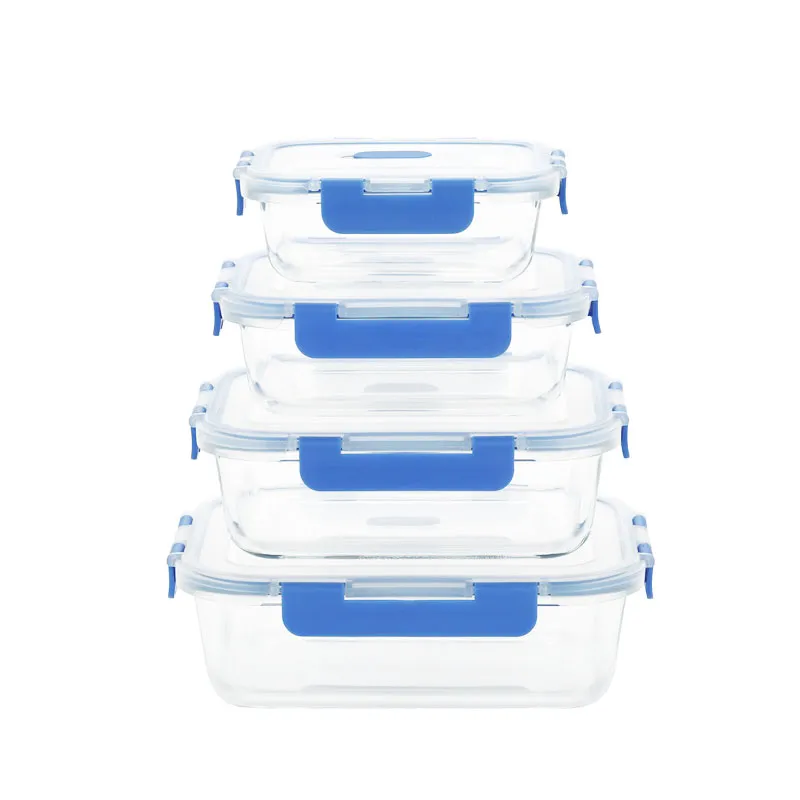
Figure 8: Customer support team ready to assist.
Lead Time & Fulfillment:
Our streamlined production and logistics ensure efficient order processing. For standard items, lead times are generally 4-6 weeks. For large-volume or highly customized orders, lead times are determined on a project-by-project basis, with clear communication at every stage. We work with established freight partners to ensure timely and secure global delivery.
Warranty & After-Sales Support:
We stand behind the quality of our vacuum container111 for food products with a comprehensive warranty. Our dedicated B2B customer support team is available to assist with product inquiries, technical support, troubleshooting, and replacement parts. We offer multilingual support and a responsive service network to ensure your operations run smoothly.
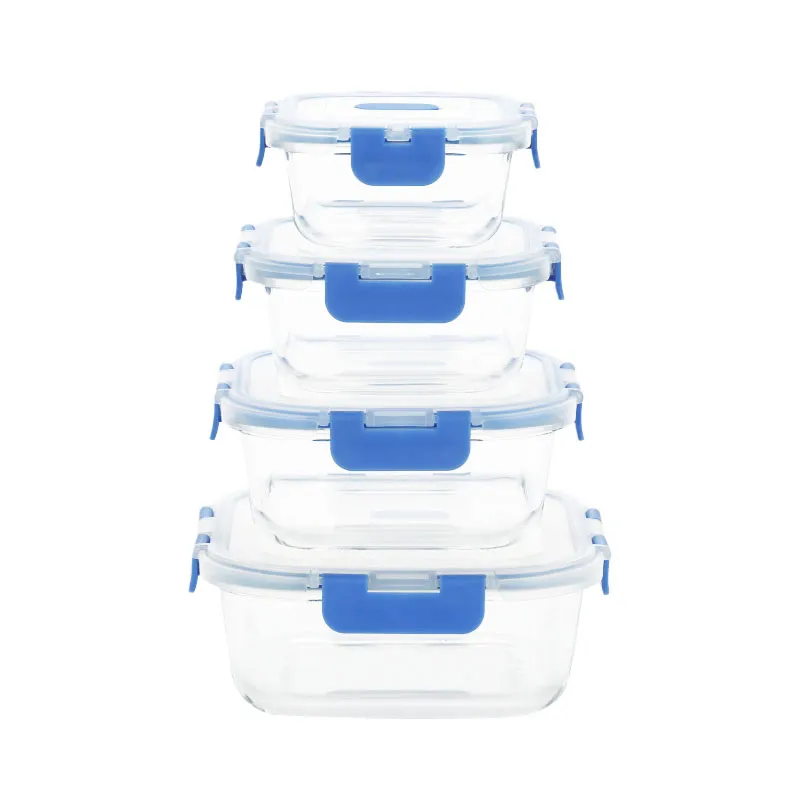
Figure 9: Warehouse logistics ensuring efficient fulfillment.
Conclusion: Elevating Food Preservation in B2B Operations
The strategic adoption of high-quality vacuum storage container111s, particularly those crafted from durable borosilicate glass, represents a pivotal advancement for any B2B entity involved in food handling. From extending the freshness of delicate ingredients to streamlining complex meal preparation processes, the advantages are clear: reduced waste, enhanced food safety, improved operational efficiency, and a superior end-product.
Our Glass Food Storage Container with Lid embodies precision engineering and a commitment to meeting the rigorous demands of commercial environments. By investing in such advanced solutions, businesses can ensure sustained quality, mitigate risks, and achieve significant long-term savings, positioning themselves at the forefront of modern food preservation practices.
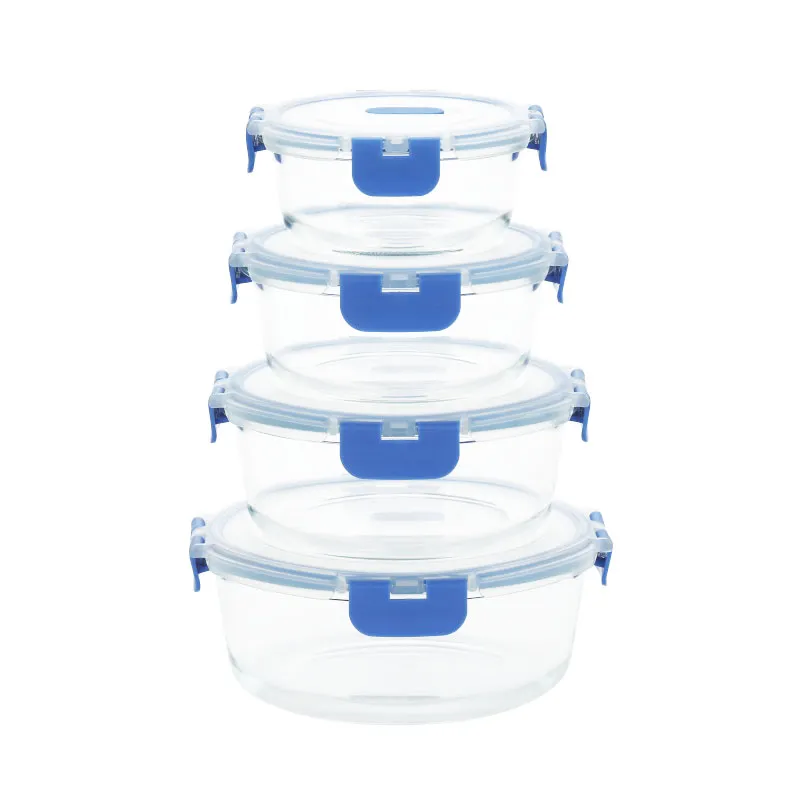
Figure 10: The complete range of vacuum food storage solutions.
References:
- Smith, J. (2021). "Advancements in Food Packaging Technologies for Shelf-Life Extension." Journal of Food Science and Technology, 58(7), 2465-2478.
- European Food Safety Authority (EFSA). (2020). "Guidance on the food packaging materials and articles." EFSA Journal, 18(1), e06001.
- International Organization for Standardization (ISO). (1998). "ISO 718:1998 – Glass – Thermal shock test methods – Glassware for laboratory use."
- U.S. Food and Drug Administration (FDA). (2023). "Food-Contact Substances (FCS) Information." Retrieved from FDA.gov.
- MarketsandMarkets. (2022). "Food Vacuum Packaging Market - Global Forecast to 2027." Industry Research Report.
-
YINTO's colored glass bowls hold stories, not just foodNewsAug.24,2025
-
Exquisite Colored Glass Dinnerware Crafted from Volcanic SandNewsAug.24,2025
-
YINTO's colored glass dinnerware: edible art's canvasNewsAug.24,2025
-
A Blue Glass Dinner Plate with an Integrated NFC ChipNewsAug.24,2025
-
The Ultimate Defense Against Lukewarm RegretNewsAug.24,2025
-
YINTO's double coffee wall cup: A silent thermal revolutionNewsAug.24,2025


